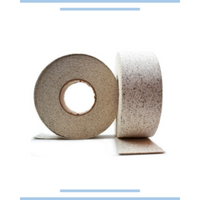Catalytic Combustors for Wood Stoves
In the world of wood-burning stoves, the quest for efficiency, sustainability, and reduced environmental impact continues to drive innovation. One of the key advancements in this domain is the integration of catalytic combustors for wood stoves. These ingenious devices not only enhance the efficiency of wood-burning stoves but also play a pivotal role in reducing emissions and ensuring cleaner combustion. In this article, we'll delve into the intricate workings of catalytic combustors, shed light on their importance, and guide consumers towards making informed decisions when it comes to selecting the right wood stove combustor for their needs.
Catalytic combustors for wood stoves are advanced components designed to facilitate more complete and efficient combustion of wood, ultimately translating into improved heat output and reduced emissions. By integrating these devices into wood stoves, users can enjoy longer burn times, increased heat generation, and a greener approach to heating their homes.
The Science Behind Catalytic Combustors
At the heart of catalytic combustors lies the marvel of catalysis – a process that accelerates chemical reactions without being consumed itself. These combustors are typically made from heat-resistant materials coated with catalysts like platinum or palladium. When the smoke and gases generated during wood combustion pass through the combustor, the catalyst triggers the oxidation of unburned particles, carbon monoxide, and volatile organic compounds, converting them into less harmful byproducts like carbon dioxide and water vapor.
Advantages of Catalytic Combustors
Integrating catalytic combustors into wood stoves offers a range of benefits:
- Increased Efficiency: The enhanced combustion process results in higher heat production and longer burn times, allowing users to extract more energy from the same amount of wood.
- Emission Reduction: Catalytic combustors play a crucial role in reducing emissions. Harmful byproducts are converted into less harmful compounds, leading to a cleaner and more environmentally friendly burning process.
- Creosote production is reduced between 20% to 90%.
- Air pollution decreases by up to 75%.
- The overall efficiency of your heat source is increased by 10%.
- Energy Savings: With improved combustion efficiency, less wood is required to generate the same amount of heat, leading to cost savings and reduced environmental impact.
Design and Life Span
Our ceramic catalytic combustors are critical for the efficiency of your wood stove. Not only do these replacement parts improve the overall performance of your wood heating application, but they also help reduce creosote production and air pollution!
The honeycomb design of our high quality round and rectangular combustors essentially traps combustion gases, while the metal coating (if applicable) acts as a catalyst that causes the gases to burn at lower temperatures. The entire process of re-purposing fire smoke and gases instead of allowing them to escape through the stovepipe or flue is what causes your wood stove to give off more heat and save energy!
Catalytic combustors should only be used with natural wood burning applications. They need to be replaced every 10,000-12,000 hours, or when they become contaminated with foreign materials from the burn process. Please check the owner's manual that came with your wood burning fireplace, insert, or stove to verify if your application uses a catalytic combustor.
Selecting the Right Wood Stove Catalytic Combustor
To make an informed purchase, consumers need to consider a few key factors:
Shape and Size: Wood stoves come in various shapes and sizes. Manufacturers like us offer both round and rectangular wood stove combustors to accommodate different stove designs.
Canned vs. Uncanned Combustors: Catalytic combustors are available in two main configurations – canned and uncanned. Canned combustors come with a protective can to shield the delicate catalyst, while uncanned ones expose the catalyst directly. The choice depends on your stove's compatibility and maintenance preferences.
Find Combustors by Stove Brand
At Fast Replacement Glass, we understand the importance of finding the right wood stove combustor that perfectly matches your stove's brand and specifications. To streamline your shopping experience and ensure that you discover the ideal combustor for your wood stove, we have introduced a user-friendly "Shop by Brand" filters. This innovative tool allows you to effortlessly explore our wide range of round and rectangular wood stove combustors based on your stove's brand, making your shopping journey efficient and hassle-free.
We sort our stove combustors by two categories, round combustors and rectangle combustors. Once you are in the correct category you will see a refined search feature on the left side of the screen, here you can select from our list of available stove brands. Once you click a brand name, only combustors associated with that brand will appear on the page. This makes shopping for your replacement wood stove combustor a breeze. It is worth noting that some wood stove combustors are classed as "universal" and you may need to shop by overall size instead. If this is the case or if you have difficulty finding the correct stove combustor simply give us a call, we are always happy to help!
Replacing Your Wood Stove Catalytic Combustor
Over time, catalytic combustors might require replacement due to natural wear and tear. If you own a wood stove catalytic combustor and notice reduced efficiency or increased emissions, it's time to consider a replacement. Our wood stove catalytic combustor replacement options ensure a seamless transition, restoring your stove's performance to its optimal level.
Catalytic combustors for wood stoves are more than just accessories – they are transformative components that elevate the efficiency, sustainability, and cleanliness of wood-burning heating systems. By understanding the science behind these devices and considering factors like shape, size, and configuration, consumers can confidently select the ideal wood stove combustor for their specific needs. Whether you opt for a round or rectangular combustor, canned or uncanned, the integration of this advanced technology promises not only warmth and comfort but also a significant step towards a greener future.
FAQ's
What is the difference between canned and uncanned catalytic combustors?
A canned ceramic combustor is wrapped with a welded stainless steel strip. This metal accelerates the catalytic reaction of converting smoke to burn as fuel. You will notice an interam gasket tucked in between the metal strip and the combustor itself.
An uncanned catalytic combustor is simply not wrapped with the metal strip.
Some manufacturers use canned combustors, while others choose uncanned. There is no real reason why - it is a preference. However, it is important that you replace your combustor with the appropriate product. Never install an uncanned combustor on a heat source that originally housed a canned combustor.
What type of heating application uses a catalytic combustor?
Only wood burning applications require a catalytic combustor. We highly recommend checking the owner's manual that came with your fireplace, insert, or stove to verify that your heat source does in fact utilize a combustor. If your application does in fact use one of these devices, remember to never burn coal, lighter fluid, treated or painted wood, paper logs, or trash within the firebox!
How often should I replace my honeycomb combustor?
Catalytic combustors operate for approximately 10,000 to 12,000 hours. However, it is a good idea to check the integrity of your combustor periodically, especially if the performance of your stove changes. Once combustors become heavily contaminated with smoke, gases, or foreign materials from the burn process, you may start to notice signs of cracking or deterioration. When you see this, the combustor should be replaced as soon as possible.
Will I need a gasket for my combustor?
Canned combustors come with a stainless steel band around the outside. Between the combustor and the metal strip is an interam gasket wrap. When you replace your canned combustor, the gasket is included.
Uncanned combustors have no stainless steel banding and must always be installed with a new expanding gasket. We offer a soft, lightweight and flexible protective gasket for this situation. The 1/16 inch thick gaskets come in 2 or 3 inch widths and can be ordered by the foot. When exposed to high temperatures, water particles that have been chemically bound to the material is released. This process cools the outer surface of the combustor and reduces extreme heat transfer, thus protecting your wood burning application from overheating. CLICK HERE to get an interam gasket for your uncanned combustor!
As always, Fast Replacement Glass is happy to answer any questions you may have. Call 1-888-986-1535 to speak to one of our customer service professionals!




